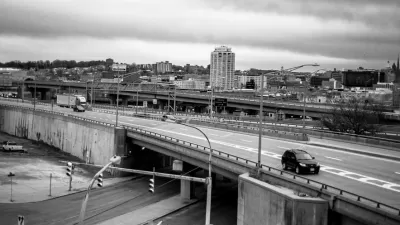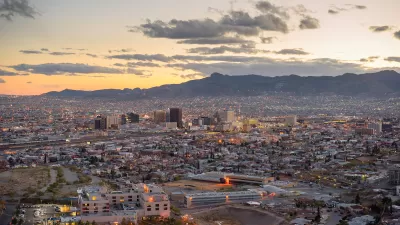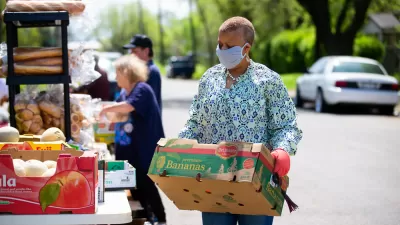The crisis facing many Fresno renters is nothing new. A history of housing in the city shows how, since the late 19th century, poor housing conditions have been "ingrained in Fresno's culture."

"Fresno’s substandard housing crisis has been in the making since the city’s birth,” the piece in the Fresno Bee begins. “It’s a story of poverty, racism, urban sprawl and neglect."
Like that of so many other American cities, it’s a story propelled in part by racist housing covenants and redlining, and legal responses to these practices that tended to change how, not whether, discrimination was enacted. The city and federal government also attempted to replace substandard housing through public housing in the 1950s and urban renewal projects in the 1960s, some of which sited highways through low-income communities.
By 1992, since discovering that "tearing out blighted areas did not eliminate social problems," the city was found to have ignored more than 1,300 homes with poor health and safety conditions, many in low-income neighborhoods of color.
The history lesson is part of a special report on housing called "Living in Misery."
FULL STORY: Fresno’s long history substandard housing: poverty, sprawl, racism, neglect

Planetizen Federal Action Tracker
A weekly monitor of how Trump’s orders and actions are impacting planners and planning in America.

Restaurant Patios Were a Pandemic Win — Why Were They so Hard to Keep?
Social distancing requirements and changes in travel patterns prompted cities to pilot new uses for street and sidewalk space. Then it got complicated.

Maui's Vacation Rental Debate Turns Ugly
Verbal attacks, misinformation campaigns and fistfights plague a high-stakes debate to convert thousands of vacation rentals into long-term housing.

In California Battle of Housing vs. Environment, Housing Just Won
A new state law significantly limits the power of CEQA, an environmental review law that served as a powerful tool for blocking new development.

Boulder Eliminates Parking Minimums Citywide
Officials estimate the cost of building a single underground parking space at up to $100,000.

Orange County, Florida Adopts Largest US “Sprawl Repair” Code
The ‘Orange Code’ seeks to rectify decades of sprawl-inducing, car-oriented development.
Urban Design for Planners 1: Software Tools
This six-course series explores essential urban design concepts using open source software and equips planners with the tools they need to participate fully in the urban design process.
Planning for Universal Design
Learn the tools for implementing Universal Design in planning regulations.
Heyer Gruel & Associates PA
JM Goldson LLC
Custer County Colorado
City of Camden Redevelopment Agency
City of Astoria
Transportation Research & Education Center (TREC) at Portland State University
Jefferson Parish Government
Camden Redevelopment Agency
City of Claremont





























